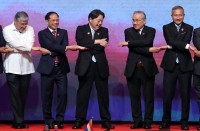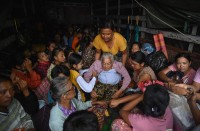(Eagle News) — Below is the full joint statement of the economic managers of the administration of President Rodrigo Duterte on the Philippine Economic Performance of the Third Quarter of 2021 issued on Nov. 9, 2021
President Duterte’s economic managers include Socio-Economic Planning and National Economic and Development Authority (NEDA) chief Karl Kendrick T. Chua, Finance Secretary Carlos G. Dominguez, and Budget And Management Officer-In-Charge Tina Rose Marie L. Canda
=====================================================
Colleagues in government, friends from the media, fellow Filipinos, good morning.
In the third quarter of 2021, we contained the Delta variant and sustained our economic expansion even as stringent quarantines were in place. Our strategy was correct. The results are clear.
Performance of the economy
The Philippine economy grew by 7.1 percent year-on-year in the third quarter. This is up from the -11.6 percent in the same period last year. This is among the highest third quarter growths in the ASEAN and East Asian region.
On a seasonally adjusted quarter-on-quarter basis, the economy expanded by 3.8 percent. This indicates sustained recovery despite two weeks of the ECQ and a month of MECQ in the country’s economic centers.
While observing the health protocols, our people continued to work and businesses continued to operate. At the same time, we saw the new daily infections fall from a peak of 26,000 on September 11 to less than 1,800 last November 4. This is due to the rapid inoculation drive from July to September, where about 19 million Filipinos were fully vaccinated.
This careful balancing between COVID-19 and non-COVID-19 needs led to the continued expansion of most sectors.
On the production side, the industry sector expanded by 7.9 percent, while the services sector grew by 8.2 percent. In contrast, agriculture slightly declined by 1.7 percent. The increase in palay production, which was aided by the continued implementation of the Rice Competitiveness Enhancement Fund, was more than offset by typhoon damages to other agricultural crops and by the African Swine Fever to livestocks.
On the expenditure side, growth was primarily driven by household consumption, which grew by 7.1 percent and accounted for 5.2 percentage points of overall GDP growth. This strong rebound points to improving consumer confidence. We expect this to be sustained in the fourth quarter given more relaxed restrictions and a higher vaccination rate.
Government expenditure returned to a positive growth trend at 13.6 percent, reversing its contraction in the previous quarter.
Moreover, total investments increased by 22.0 percent, driven by public and private construction that grew by 55.3 percent and 12.2 percent respectively. The government’s decision to allow all construction activities to resume regardless of the area’s quarantine status must be credited for this.
Our external trade grew as well. Exports grew by 9.0 percent while imports grew by 13.2 percent. The high growth of imports reflects the strong recovery of consumption and investment spending. The moderate growth of exports reflects both the global recovery as well as global logistics issues.
Prospects and recommendations
With strong third quarter growth and overall performance in 2021, we are on track to reach the high-end of our 4 to 5 percent growth target for 2021. Year-to-date growth is currently at 4.9 percent.
With adequate supply of vaccine doses, the government is further accelerating the vaccination program over the next few weeks. With current trends, we expect to achieve alert level 1 by the onset of the New Year.
To further sustain our growth this year and next year, the government will further accelerate the vaccination program, reopen to alert level 1 in January 2022, and maximize the use of the 2021 budget.
As of November 7, a total of 64.2 million vaccine doses have been rolled out. Of these, 34.7 million doses were administered as the first dose and 29.5 million were administered as the complete dose. This means that 29.5 million Filipinos or 38 percent of the adult population have been fully vaccinated. The numbers will improve rapidly as we continue to ramp up the vaccination program. On November 4, the Philippines exceeded 1.1 million jabs in one day.
In the coming weeks, the vaccination program will include children aged 12 to 17. When the approvals are made, we will soon include children aged 5 to 11. This opens the door to the resumption of face-to-face schooling beginning in January 2022.
Lastly, more efficient public spending will enhance economic expansion. In the third quarter, national government disbursement surpassed the programmed level by 4 percent. Sustaining this into the fourth quarter makes achievement of our growth target certain.
Conclusion
It has been 20 months since the pandemic struck the country.
There were doubts and there were challenges in the first few months. But there was never a lack of resolve. We moved quickly to build up our health system and made provisions for massive vaccine procurement. With decisive leadership and a determined people, we are now reaping the results.
In the remaining eight months of the Duterte administration, our top priority will be laying the foundation for a COVID-19 resilient society that can live with the virus. We will return to the path of rapid and more inclusive growth. We owe this to the people. It will be done.
(Courtesy NEDA)








